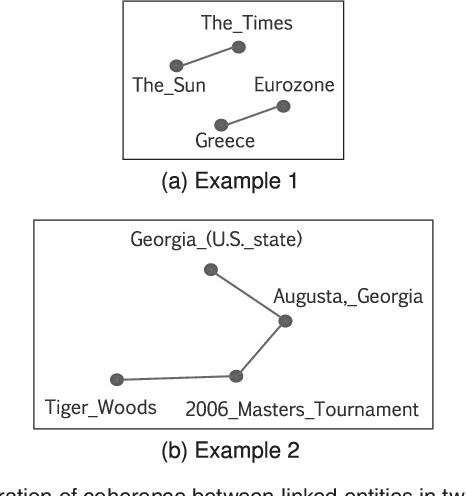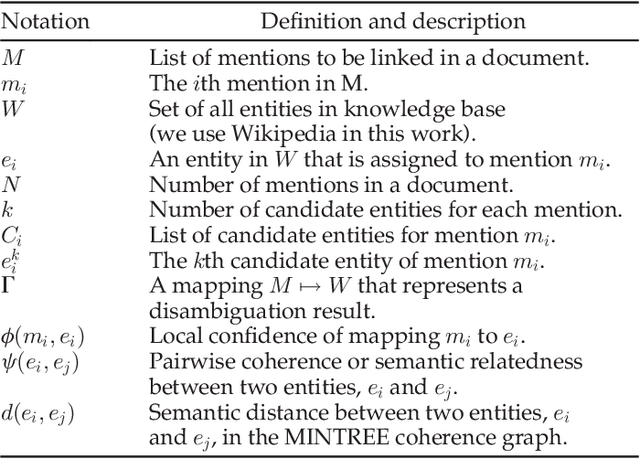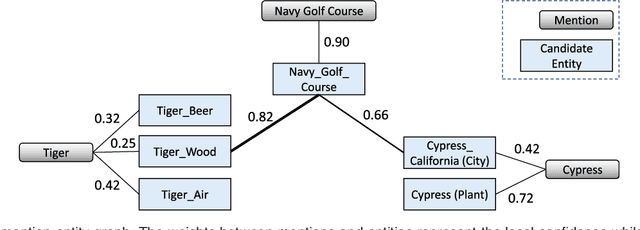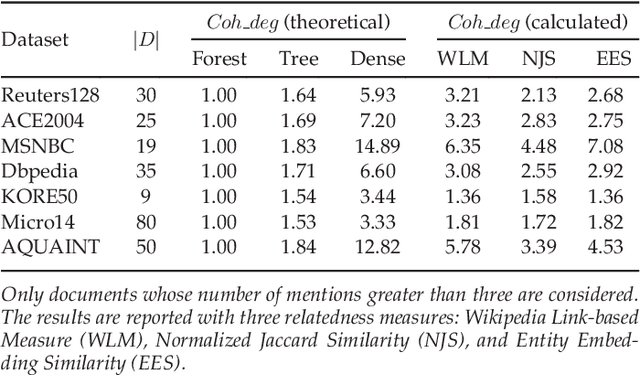Pair-Linking for Collective Entity Disambiguation: Two Could Be Better Than All
Paper and Code
Jul 16, 2018



Collective entity disambiguation aims to jointly resolve multiple mentions by linking them to their associated entities in a knowledge base. Previous works are primarily based on the underlying assumption that entities within the same document are highly related. However, the extend to which these mentioned entities are actually connected in reality is rarely studied and therefore raises interesting research questions. For the first time, we show that the semantic relationships between the mentioned entities are in fact less dense than expected. This could be attributed to several reasons such as noise, data sparsity and knowledge base incompleteness. As a remedy, we introduce MINTREE, a new tree-based objective for the entity disambiguation problem. The key intuition behind MINTREE is the concept of coherence relaxation which utilizes the weight of a minimum spanning tree to measure the coherence between entities. Based on this new objective, we design a novel entity disambiguation algorithms which we call Pair-Linking. Instead of considering all the given mentions, Pair-Linking iteratively selects a pair with the highest confidence at each step for decision making. Via extensive experiments, we show that our approach is not only more accurate but also surprisingly faster than many state-of-the-art collective linking algorithms.
 Add to Chrome
Add to Chrome Add to Firefox
Add to Firefox Add to Edge
Add to Edge